While Audio by Van Alstine (AVA) may be a new name for many, there’s a good chance you are at least peripherally familiar with Frank Van Alstine’s work. Out of his shop in Minnesota, he spent years developing modifications and upgrades for Dynaco and Hafler equipment—and those kits are still available. For customers wishing to get hands-on with their stereo, the upgrade kits are rumored to take an already-great piece of classic equipment to an entirely new level. For those with the skills and time, these kits can provide their owners some fantastic sound at very reasonable price points.
For the fine-motor-skill-challenged folks like myself, a hot soldering iron and a lot of tiny and delicate electrical parts presents a potentially disastrous combination, and so I prefer to purchase my stereo components from the hands of the true experts. Fortunately for me, Mr. Van Alstine recognizes the many audio fans in my circumstance who are seeking great-sounding equipment without requiring a second mortgage to finance it. Building on the knowledge and insight accumulated over the years, AVA came to life, bringing with it amps, preamps and DACs.
AVA offers both solid-state and tube designs. The company’s website has a chart describing the differences between its preamp designs and the sonic signature of each. With four preamps in the current AVA lineup, I welcomed the opportunity to test its flagship, the Fet Valve CF hybrid preamplifier. Each circuit of our test unit features two 12AT7 tubes supplementing the gain stages and two 12AU7 tubes acting as cathode followers—from which this preamp gets its CF designate. According to AVA, this design represents “the very best we can currently do,” and so it is with high expectations that we at TONE anticipate hearing its sonic virtues.
Customization
AVA sells directly from its website and builds each product at the time of order. The company offers several options for the Fet Valve CF preamp, depending on the user’s needs and preferences. The entry point is the black faceplate model for $1,899. The same preamp with a silver faceplate starts at $2,099. From there, the owner has several upgrades to choose from. For those planning integration into a home theater setup, a bypass switch for the preamp is available for $50, allowing a surround-sound processor’s volume knob to act as master volume for the system. Vinyl fans will appreciate optional RIAA phono circuits, priced at $249. Inverter/bridge circuits and buffered tape output circuits are available for $199 each. And finally, a high-quality remote control with a mute button adds $299. With all the add-ons, a fully loaded Fet Valve CF runs in the neighborhood of $3,000.
Straightforward Setup
From a usage scenario, the Fet Valve CF could not be simpler. The back panel of our test unit offers a phono input, five line inputs, a tape input and output, plus two sets of main outputs. All connections are single-ended RCA.
On the front panel, from left to right, thee rotary knobs control source selection, volume and balance. Above the source knob, which selects from the six line inputs, are two toggle buttons. One offers a choice of stereo or mono playback; the other allows tape monitoring. Above the volume knob, two additional buttons control filter and low gain. According to AVA, these special settings offer the user more control over aggressive speakers and source material. As icing on the cake, the Fet Valve CF includes a 1/4-inch headphone output.
Listening
After several days of burn-in, the Fet Valve CF finally has its chance to sing. Sitting in the listening chair, I reset my mental sonic expectation to where my past experience with $2k preamps has placed it. There’s very good gear in this price range, but much of it requires some sonic tradeoff. The play button starts the music as expected, and surprisingly, it also activates my “mouth ajar” setting. The Fet Valve CF certainly offers a great first impression.
I use the term hybrid for this amp, which refers to both its sonics and its design. While the marvelous, fluid tube midrange is there, some of the downsides associated with older tube designs, like limited bass punch and definition, do not follow suit. In fact, the Fet Valve CF creates bass that’s quite deep and noticeable right out the gate.
While instruments and vocals retain a high degree of realism, there’s also a forgiving nature to the preamp’s sonic signature. Rendered digitally, some female vocal recordings, like Amy Winehouse’s Back to Black, retain a bit of grain and edge. Through this preamp’s lens, the excitement of the performance remains, while reducing these unwanted artifacts and retaining the underlying emotion of the original recording.
Saxophones and trumpets have an inherent potential for sonic sharpness. Recorded well, the sound captured from these instruments is one of incredible, live detail, but with some lesser-quality jazz recordings, a transparent window to untamed digital harshness can impart the listening experience with some unpleasantness. Striking an interesting balance, the Fet Valve CF places strident instruments in a slightly warmer light—which is not to say that the preamp creates an artificially sugary sound; to my ears, the sound remains generally neutral. Rather, it makes the best of what it’s given. Using the pass and filter toggles described earlier, the listener retains greater sonic control than most hi-fi preamps allow.
Music portrayed through the Fet Valve CF may not have the lush and nuanced refinement I’ve heard with more expensive gear, but this preamp certainly has a way of making lemonade from lemons. In addition to accurately conveying the woodiness of string instruments, the Fet Valve CF also offers a compelling representation of percussive instruments. Cymbals have the expected shimmer after a strike; snares retain the requisite rattle; triangles and tambourines have the ring they should. In general, this preamp retains symphonic music’s high degree of naturalness.
Compared with much more expensive reference gear, the Fet Valve CF creates a leanness to the sound. While it does a very good job reproducing both frequency extremes, it does have a somewhat reduced degree of richness and fullness by comparison. In orchestral pieces, the ambience of the performance hall is diminished. I also find that the width and depth of the stereo image through the Fet Valve CF is truncated. The music does not extend much beyond the left and right speaker limits. This preamp also struggles to project sound into the perceived space behind the speakers, although I will say that vocals never get recessed into the mix.
Despite these limitations, the sonic elements that reveal themselves between the speakers remain well separated and quite convincing. If forced to make a tradeoff, I’d prefer the Fet Valve CF’s large and realistically rendered sonic image—one that’s akin to stepping back several rows in a live performance—to having an artificially bloated image increasing the apparent size of vocalists or instruments. After getting used to the Fet Valve CF’s portrayal, I decide that it doesn’t reduce the enjoyment of the performance; it just puts a different lens on it.
Like the rest of the Fet Valve CF, the phonostage offers a fantastic price-to-performance ratio. While the sonic attributes described earlier remain generally consistent regardless of source, vinyl albums do take on a more relaxed musical presence though this preamp than their digital counterparts do. Considering the phono section is a mere $250 upgrade option, it’s an absolute steal. Even if you don’t have a turntable now, you might later!
Conclusions
Reviewing equipment involves critiquing the nuances of the musical presentation to determine strengths and weaknesses. But when that analysis is complete, it’s equally important to take a step back and listen to the music, not just the equipment. Does that piece of gear allow the listener to get pulled into the sound and forget the hi-fi behind it? With the Fet Valve CF, the answer is an unequivocal yes.
This preamp is one of those pieces of budget gear that excels on many, many levels. While much more expensive preamps residing in my test system may exceed the Fet Valve CF’s capability in various ways, this preamp never fails to provide musical fulfillment that exceeds expectations for its price point. It’s not perfect, but it’s also not saddled with any major compromises.
For those looking to build a home hi-fi system in the $8,000-to-$10,000 range, the AVA Fet Valve CF preamp can serve very well as an anchor component. Depending on the options chosen, $2,000 to 3,000 delivers great sound, leaving the rest of the budget for speakers, amp and sources that complement it. Do yourself a favor and keep this preamp in mind—it might just be the solution you are looking for.
Additional Listening
By Jeff Dorgay
Not quite old enough to have purchased tubed Dynaco gear new, I did spend a fair amount of time growing up with it—and I remember when Van Alstine came on the scene, offering updates that took this modest gear to killer levels. Frank has definitely taken everything further over the years, and he’s done so while keeping the costs in line.
If I had to describe Van Alstine gear in one word, it would be honest. This is well-made gear that delivers honest performance without frills. When I mate the Fet Valve CF to the Van Alstine Ultravalve vacuum tube amplifier, the synergy is fantastic, as you might expect. Using the two together with a handful of speakers, I don’t find the smallish soundstage that Jerold experienced to be an issue; it may have been system synergy. With the Fet Valve CF, everything from AVA’s own amplifier to a few examples from Pass Labs, Simaudio, Octave, and Audio Research all reveal the same big soundstage.
Van Alstine offers a 30-day trial on all of its gear, so you’ve got nothing to lose. I suspect precious few of these get sent back. This preamplifier is a proud addition to my list of Publisher’s Choice Awards for 2013.
Audio by Van Alstine Fet Valve CF Vacuum Tube Preamplifier
MSRP: Starting at $1,899




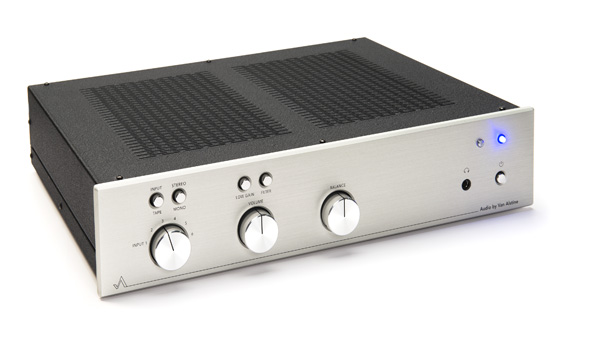
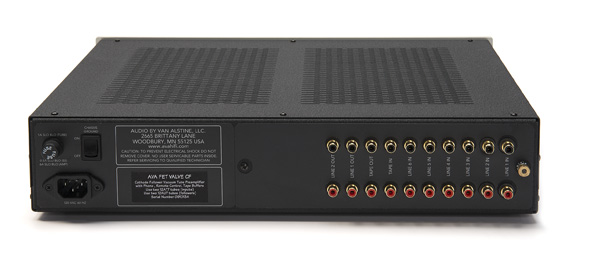



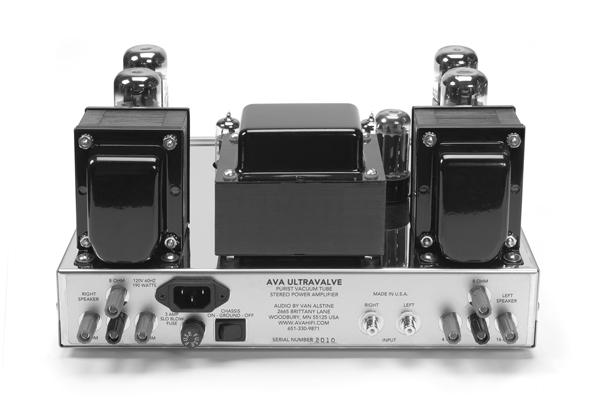
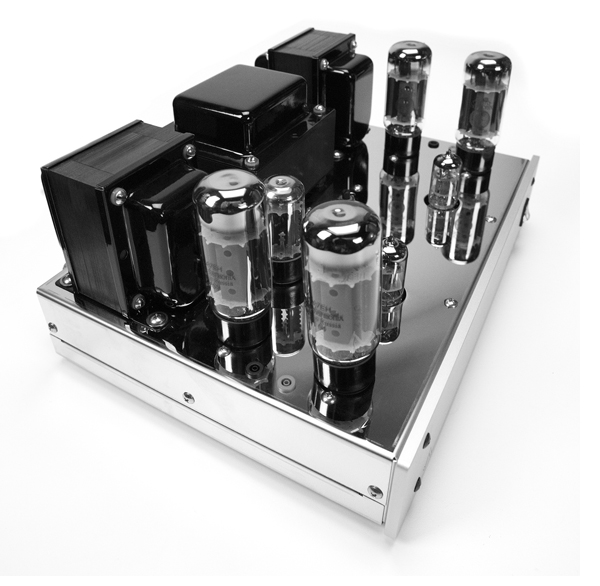

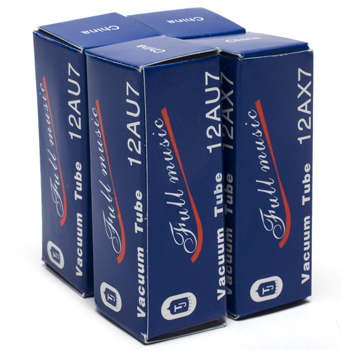 Second test: Driver
Second test: Driver








